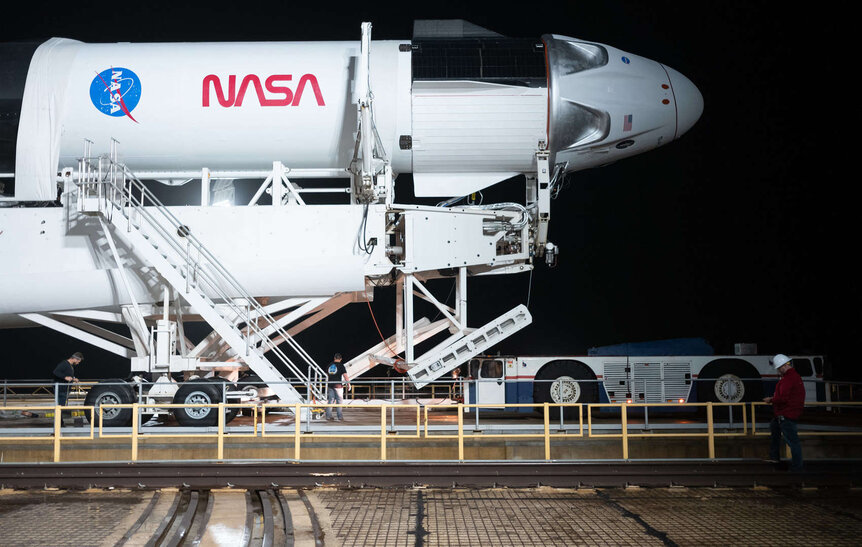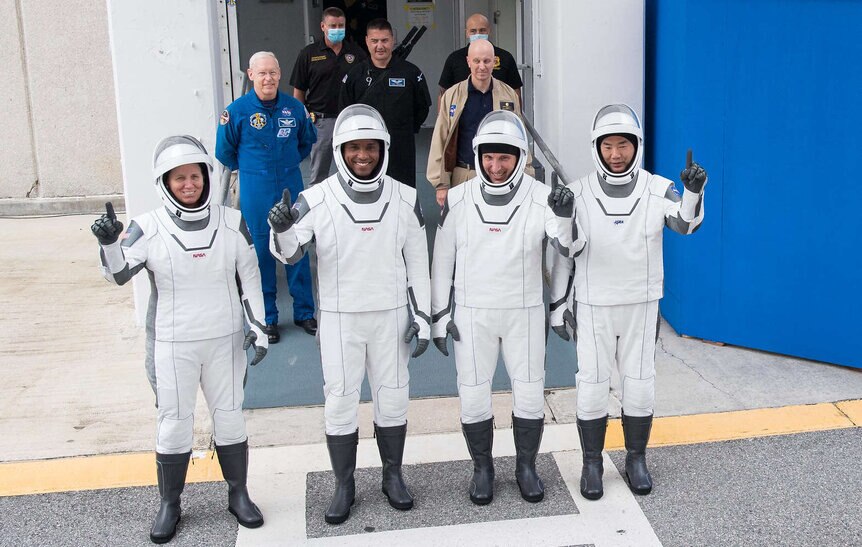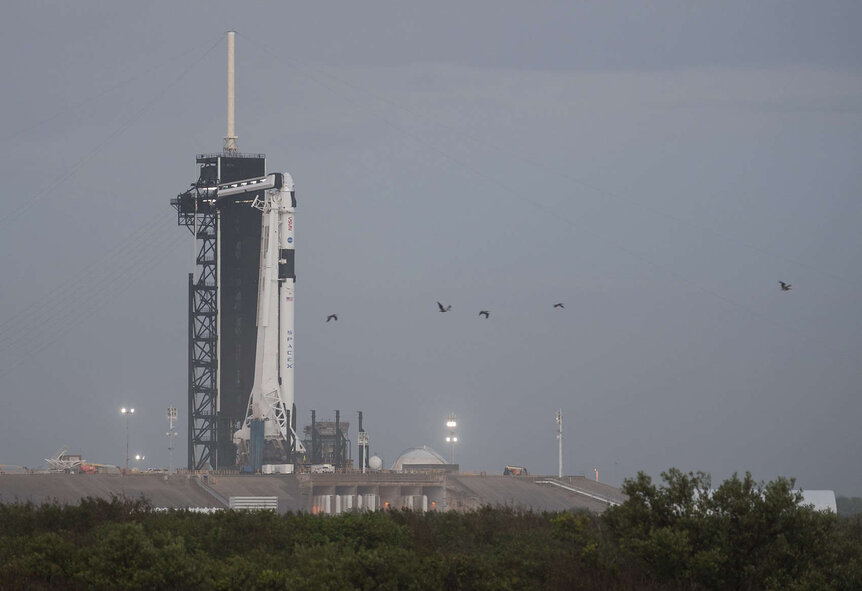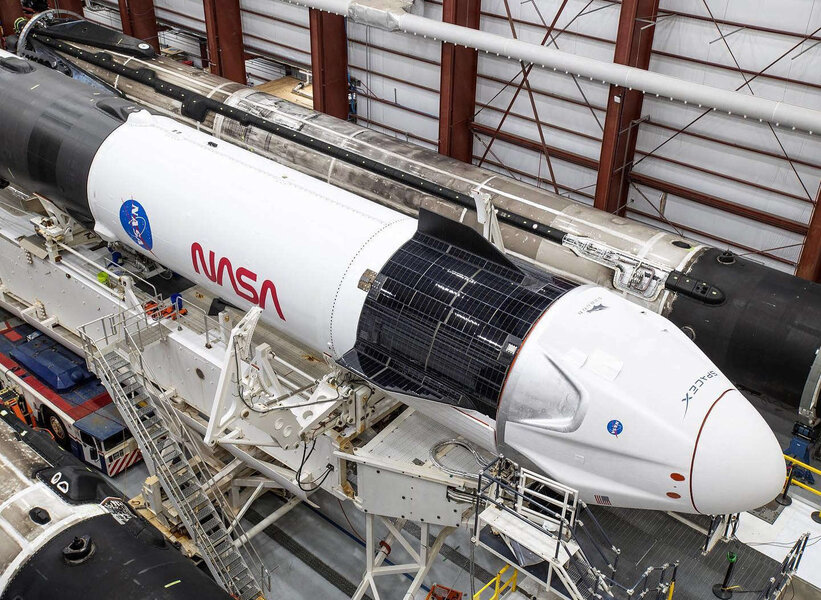Create a free profile to get unlimited access to exclusive videos, sweepstakes, and more!
What you need to know for SpaceX and NASA's first official crewed launch
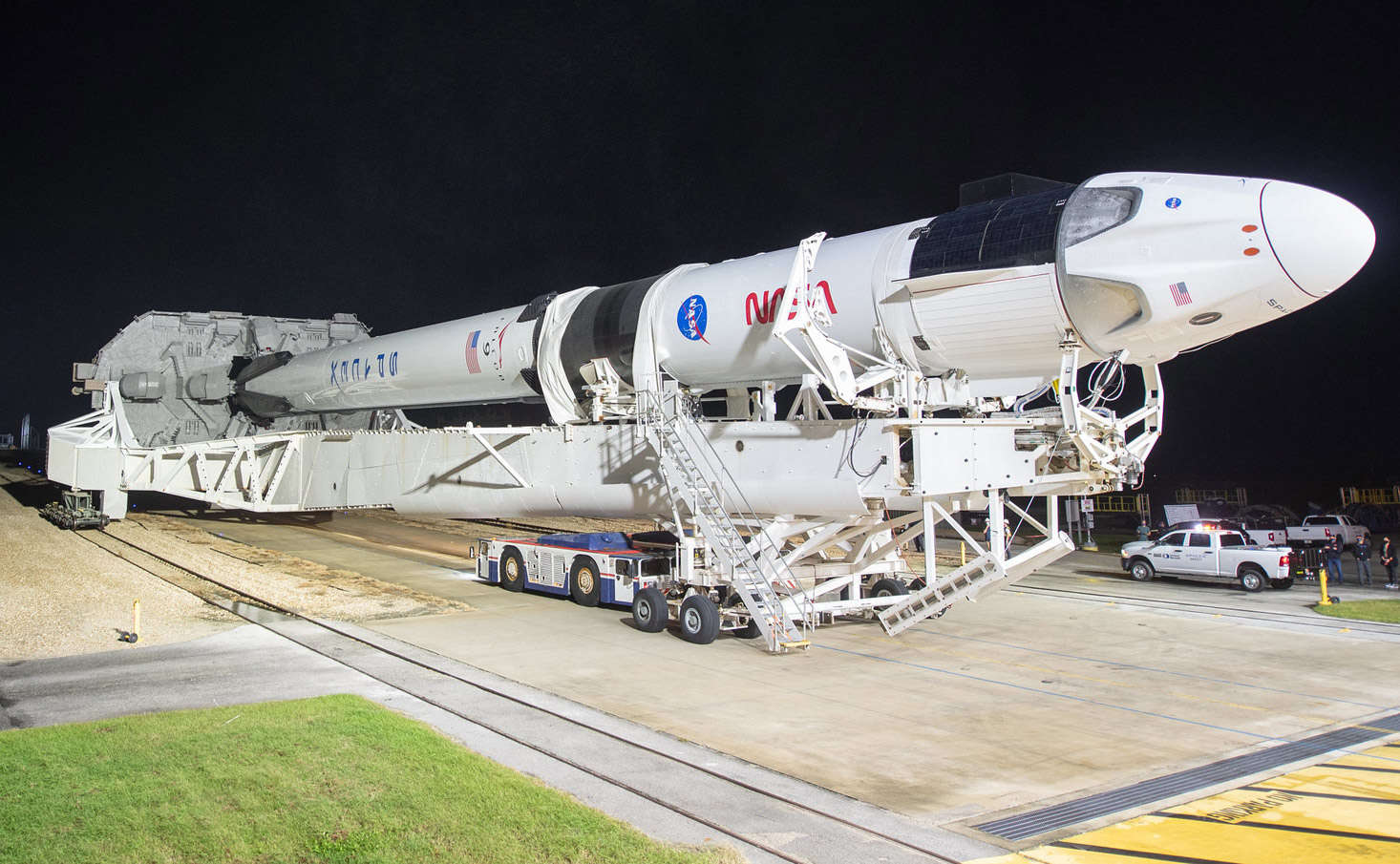
UPDATE (15 November at 16:00 UTC): The first launch attempt was scrubbed due to weather. NASA Administrator Jim Bridenstine tweeted this:
So the launch is delayed until Sunday night / Monday morning at 00:27:17 UTC (Sunday at 19:27:17 Eastern). I've updated the dates and times in the article below.
On Sunday night, 15 November 2020, NASA and SpaceX are hoping to launch the first official crewed regular flight to the International Space Station (or ISS) on a Falcon 9 rocket with a Crew Dragon.
The launch is scheduled for 19:27:17 Eastern (US) time (00:27:17 UTC Sunday night/Monday morning).
Launching from the Cape Canaveral in Florida will be four astronauts: NASA's Mike Hopkins, Victor Glover, and Shannon Walker, and the Japanese Space Agency's Soichi Noguchi. Glover is the space flight rookie; the other three are all veterans, having flown to space before.
The Crew Dragon — named Resilience by the four astronauts — is also a rookie. This will be its first flight, but the capsule is designed for reuse, and has been tested extensively. The Demo-1 flight was an uncrewed orbital mission in 2019 that carried supplies to ISS. Demo-2 carried two NASA astronauts to ISS in May 2020.
So this mission, called Crew-1, is the first official flight for NASA's Commercial Crew Program (CCP) — technically called the first operational mission (Boeing is also participating in the program, with its Starliner spacecraft scheduled for crewed launch no earlier than July 2021). Although this is the second crewed CCP flight for SpaceX, it's the first of what should be “routine” missions carrying astronauts to ISS via a Falcon 9 and Crew Dragon.
The launch itself should be spectacular, since it's at night. Once the first stage booster is done, it will come back to Earth to “land” on a drone ship over 500 km east of the launch site in the Atlantic Ocean. The second stage will carry the Dragon the rest of the way to orbit, which should be achieved just 12 minutes after launch. A little over a day later, on Monday evening, the Dragon is programmed to autonomously dock to the 100-meter wide orbiting platform 400 kilometers above the Earth. SpaceX has info on the sequence at their site.
Even though SpaceX did this once before with Demo-2, there's a lot riding on this mission. For one thing, there are twice as many astronauts on board. Also, it's the first operational mission launch from American soil since the Shuttle retired in 2011; since then the American space agency has had to rely on the Russian state corporation Roscosmos for launches on their Soyuz rocket.
That has been expensive and, in my opinion, NASA was being gouged for those flights in later years. The SpaceX flights are far less expensive — NASA spent over $85 million per seat on the Soyuz, but it's about $55 million per seat on the Crew Dragon.
So if all goes well this will show the viability of commercial flight into space. To be fair we're already pretty much there, but since this is the first operational flight this should seal the deal.
NOTE: The weather predicted for the launch is a little iffy, with a roughly 50% chance of launch. If things get worse and they scrub, the backup launch time/date is 23:16 UTC on Wednesday 18 November 2020 (18:16 Eastern US time).
How to watch:
Approximately eleventy billion venues will be carrying the launch. You may have a favorite but it's good to have a few as backups, so here are some choices:
- NASA TV
- SpaceX will have a live webcast starting about four hours before launch. Their launch coverage is always excellent.
- Discovery and the Science Channel will both have live coverage starting at 17:00 Eastern US time Sunday. It features interviews with NASA astronauts, too. You can also watch on their Discovery GO app.
- CNET will have a livestream on YouTube
More info:
- Everyday Astronaut has a great synopsis of mission facts
- SpaceNews is an excellent source for, um, space news
- NASASpaceFlight is another good site
- … of course, NASA itself.
- The Planetary Society has an interesting article about why we need both SpaceX and NASA
To SpaceX, NASA, and the four astronauts who will ride that candle to the sky: Fair winds and following seas.
